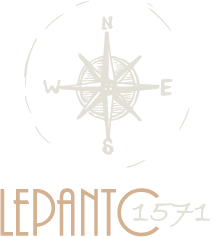Assessment of the battle from the military point of view
The naval battle of Lepanto marked a turning point in the method of naval fighting in the future.
The contribution of the galleasses proved very important for the western forces, as it is estimated that the former destroyed about 70 Ottoman ships. It suffices to say that around noon the central vanguard of the western fleet was almost inert. However, upon seeing the galleasses the Ottoman ships started increasing the distance among them in order to avoid their fire. Thus the Venetian galleasses managed to disperse the enemy fleet and then to cause severe damages. As a far-fetching result more importance was hence placed on building larger ships with heavier armament.
Yet, one also has to mention the contribution of the natural phenomena during the battle. When the Ottoman fleet sailed from the port of Lepanto, the NW winds blowing in the region was particularly favourable to the Ottomans. However, the wind soon started blowing from a western direction, which helped the movement of the heavy and slower galleys of the allied western forces. This change of wind was taken by the crews of the Ottoman army as a bad omen and, at a practical level, it helped the westerners to avoid the outflanking of their left flank.Assessment of the battle from the political point of view
Naupaktos is situated at a distance of about 100 klms from Preveza at a straight line. Yet, the distance between the naval battle of Preveza in 1538 and that of Lepanto in 1571 equaled the peak and the beginning of the fall of the Ottoman Empire. The fact that the Ottoman fleet was seriously affected at Lepanto and the Ottoman expansion to the Adriatic Sea and the northern shores of the Western Mediterranean was hailed in the west as a victory of the Christian forces over Islam, thus acquiring and eschatological significance. In fact, however, it was a victory without sequence. The forces constituting the Holy League soon lost their coherence, unable to profit from their victory and conquer possessions of the Ottomans into the Eastern Mediterranean.
The Ottomans, on the other hand, soon recovered from their defeat and managed to control permanently the naval basis on the shores of Tynisia. It is noteworthy that the central Ottoman shipyard (Ters'ane Amiri) at the shores of the Golden Horn managed to build 150 galleys within a single winter following Lepanto.
Furthermore, right after the battle the Western forces started to seek ways for negotiating with the Ottomans and extracting the major possible financial profits. Pioneers in this practice were the Venetians. After all, despite the fact that the naval battle of Lepanto was vested ideologically as a conflict between Christianity and Islam or between civilization and barbarism and similar concepts, on a purely political level Lepanto served only to the point that it enabled the western forces to dictate their own conditions as well while negotiating with the “Grand Turco”.

